O MOST glorious God, whom the heaven of heavens cannot contain; Graciously accept the Dedication of this place to thy service; and grant that all who shall call upon thee here may worship thee in spirit and in truth, and may in their lives show forth thy praise; through Jesus Christ our Lord. Amen.
Prayer for the Consecration of a Church – 1928 Book of Common Prayer
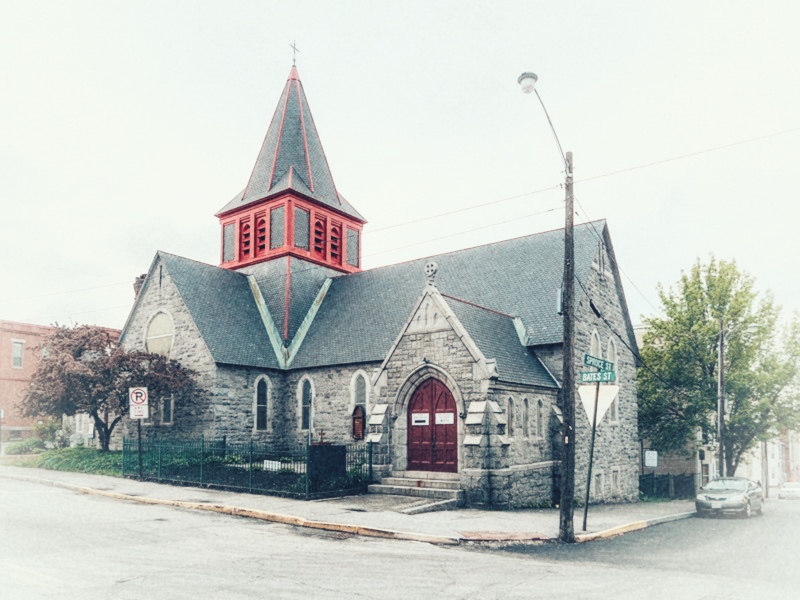
Trinity is a small congregation with a huge heart – celebrating a deep and ongoing commitment to the people of Lewiston – particularly the most vulnerable.
Image: Corner of Bates and Spruce Streets, Lewiston, circa 1980
“Trinity Episcopal Church is an historic church building at 247 Bates Street in Lewiston (Maine’s second largest city located along the Androscoggin River and twenty miles from the Atlantic coastline). It is a modestly sized yet handsomely decorated Gothic Revival building, designed by C.C. Haight of New York City and completed in 1882. The building was listed on the National Register of Historic Places in 1978.”
Wikipedia – October, 2023
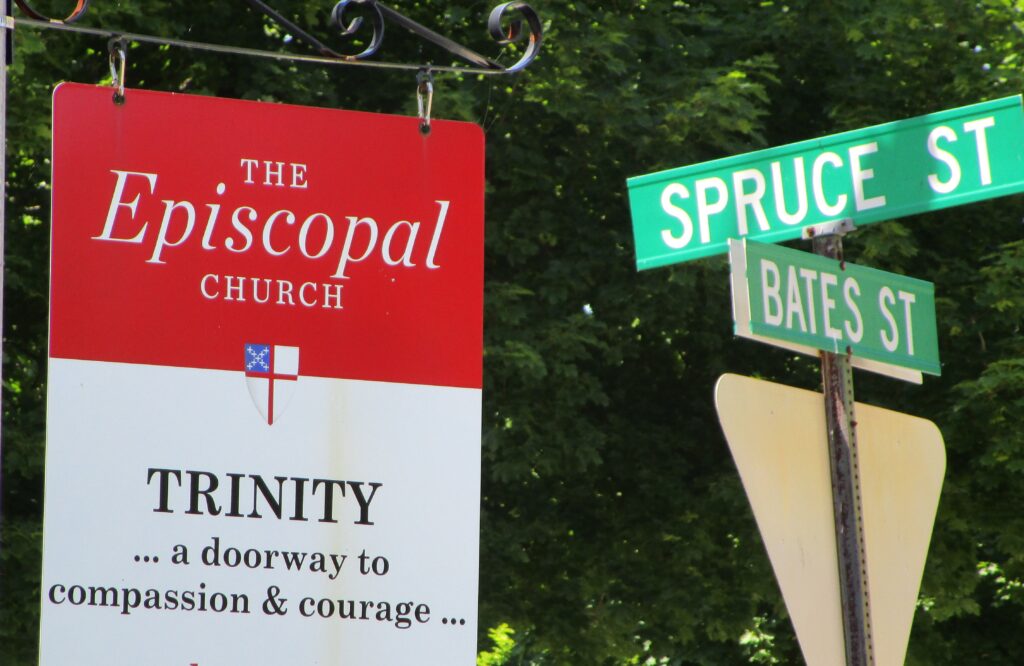

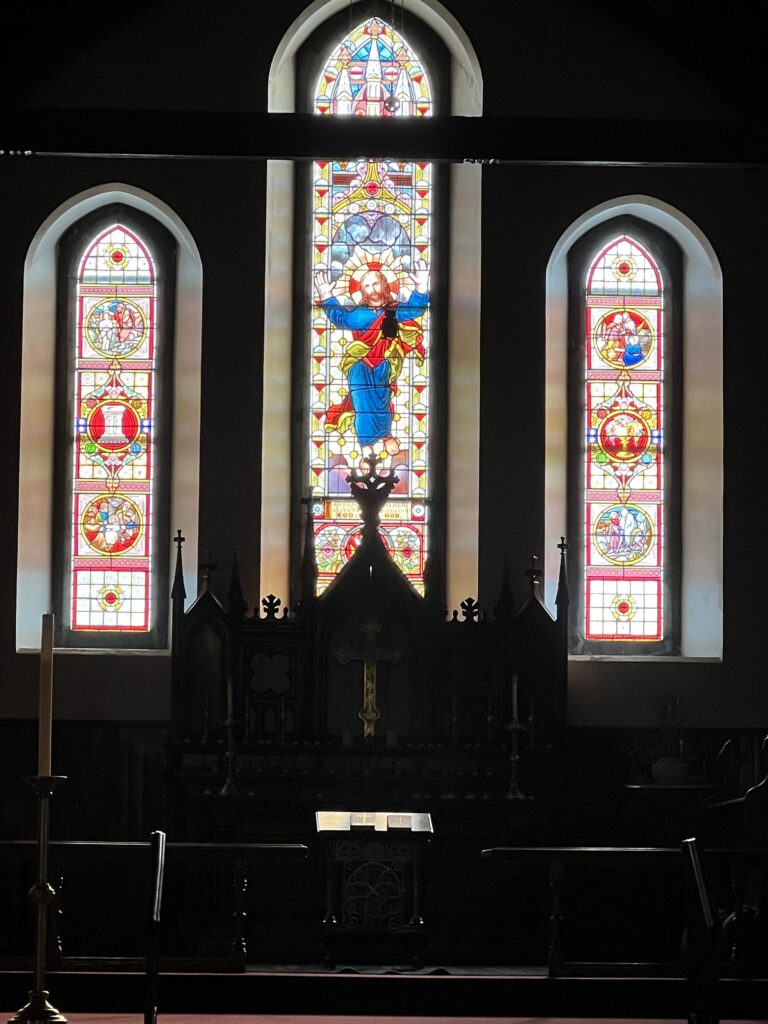
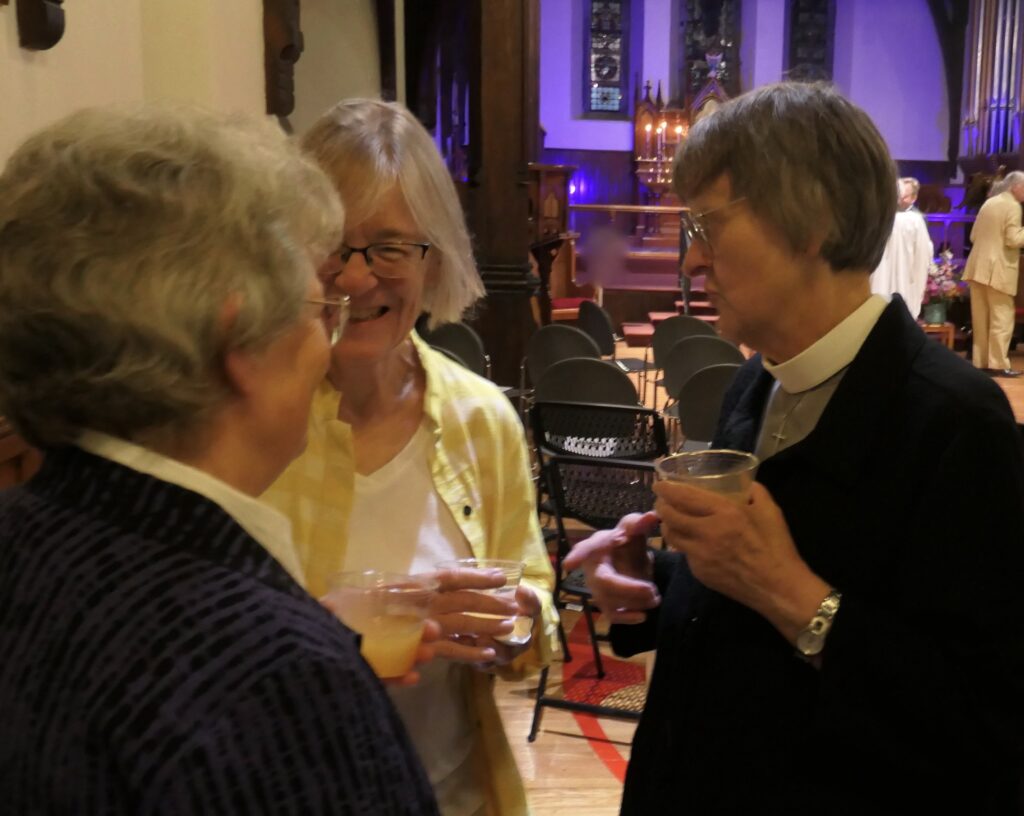
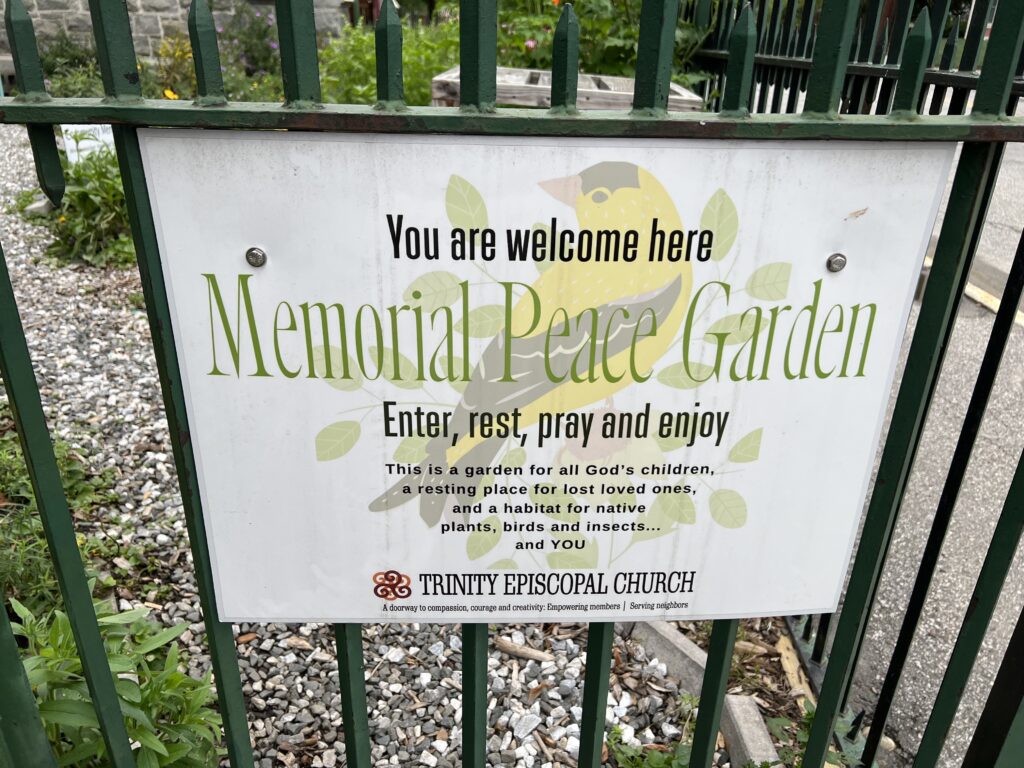
Structure
The Trinity Episcopal Church building stands at the southwest corner of Spruce and Bates Streets in downtown Lewiston, Maine, just south of Kennedy Park. It is a single-story stone structure laid out in a cruciform plan, with granite walls and a slate roof. A square tower with a belfry and hipped spire rises at the center of the cross, and a secondary gabled entrance vestibule – “Narthex” – projects north from the rear of the nave.
The pews were removed and repurposed in 2022 and replaced with cathedral chairs that compliment the rich English Chestnut wood that comprises the ceiling, columns, reredos, and large portions of the interior. Period stained glass windows – generally narrow lancet-arched Gothic windows – adorn the building throughout. These include a large a large depiction of Christ Rising in Glory over the reredos, two magnificent rose windows in the trancepts, and one window on the south side of the Nave inscribed with the ironic inscription: “She hath done all that couldest be done” !
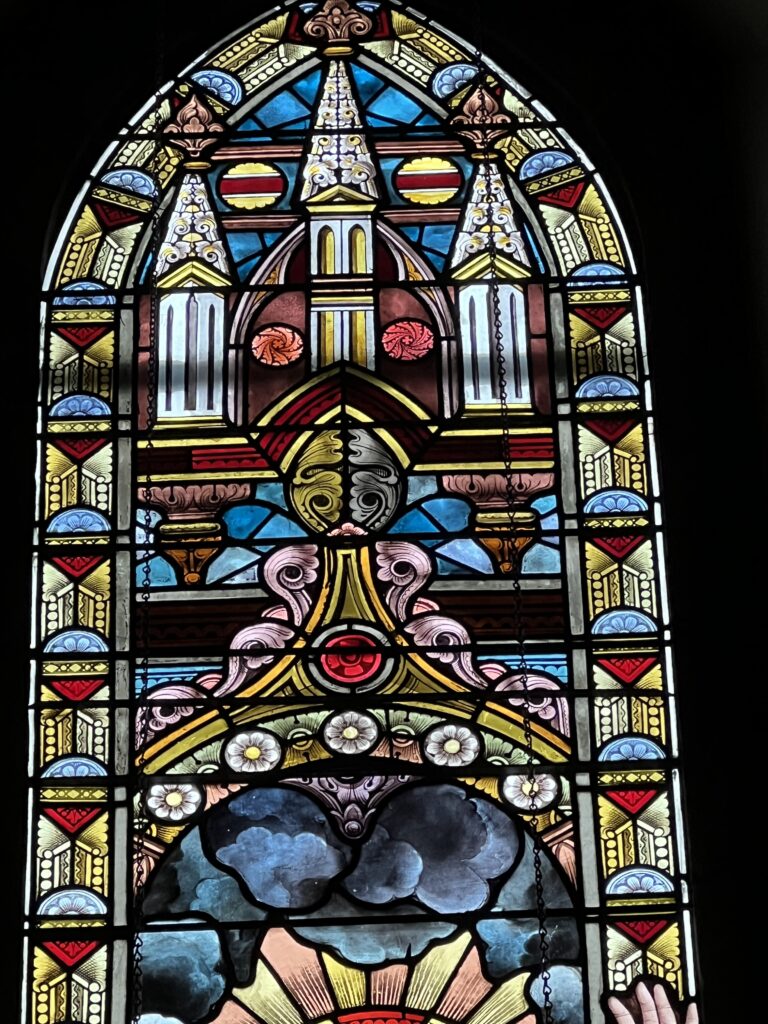
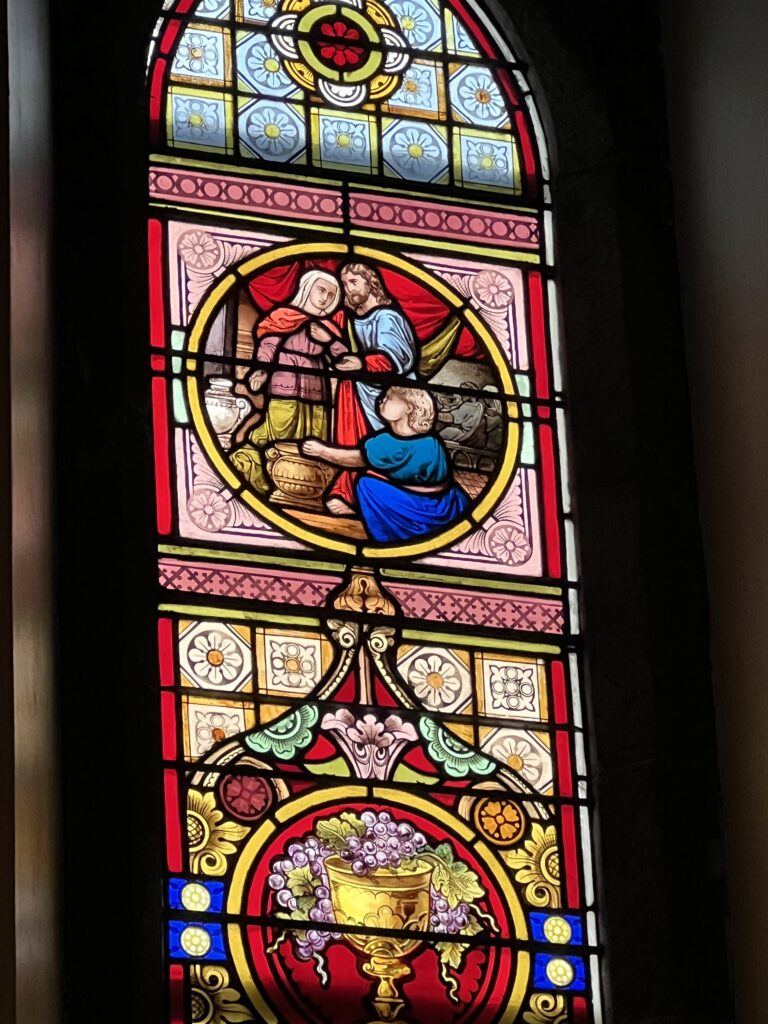
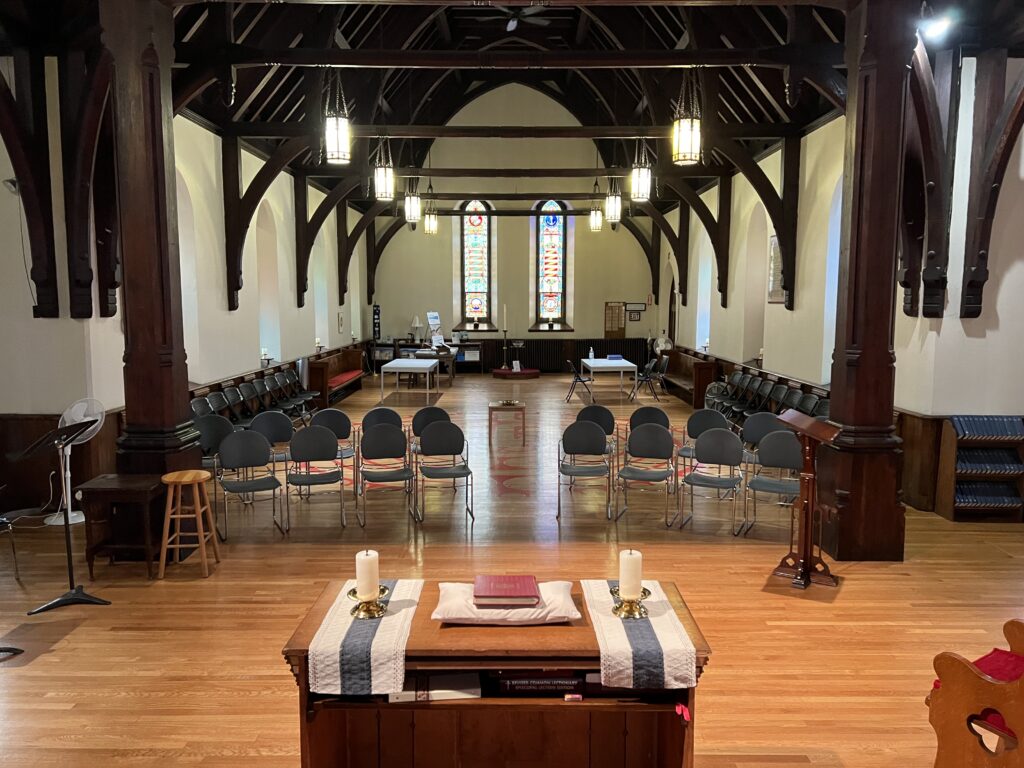
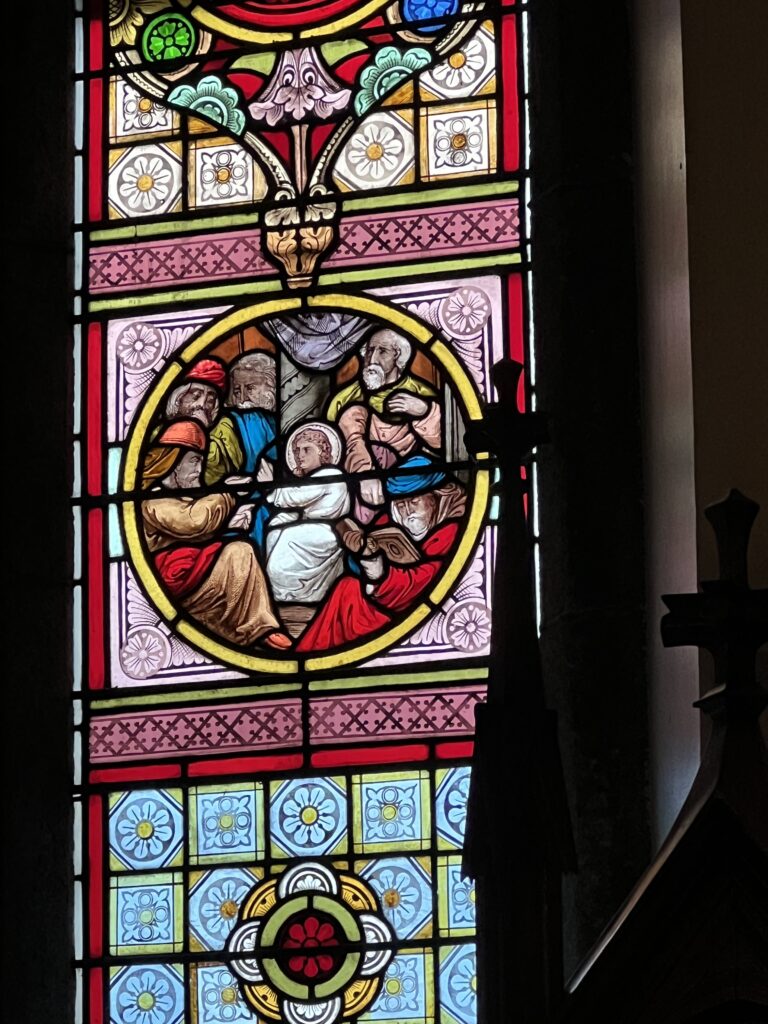
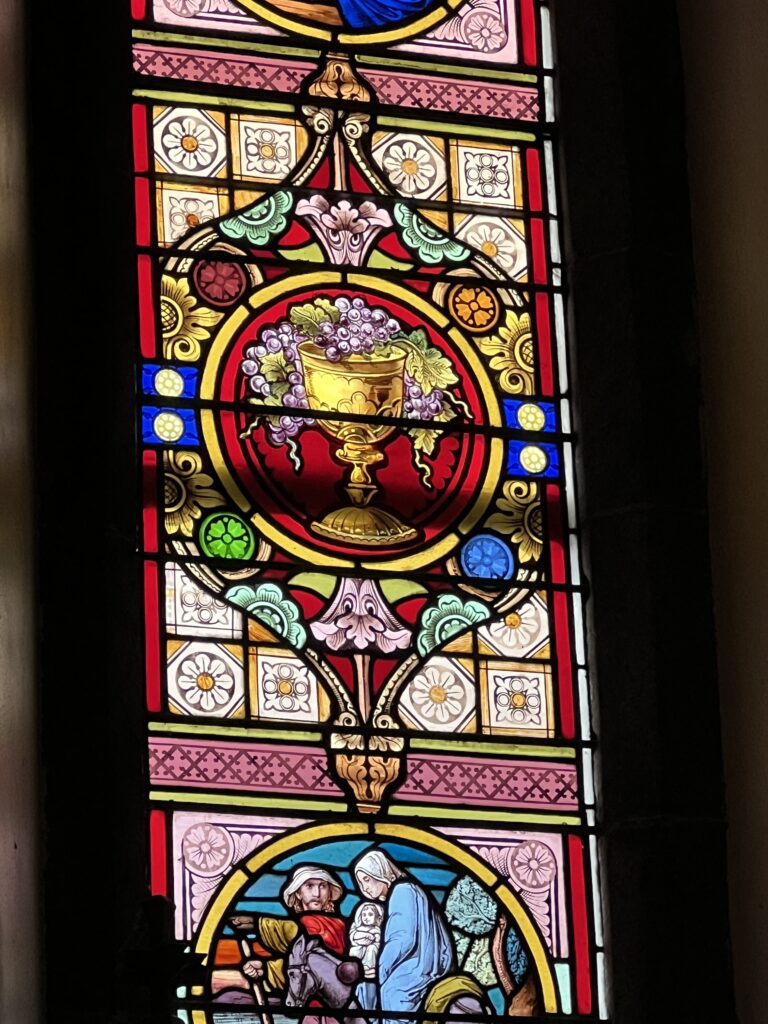
History of Trinity Church
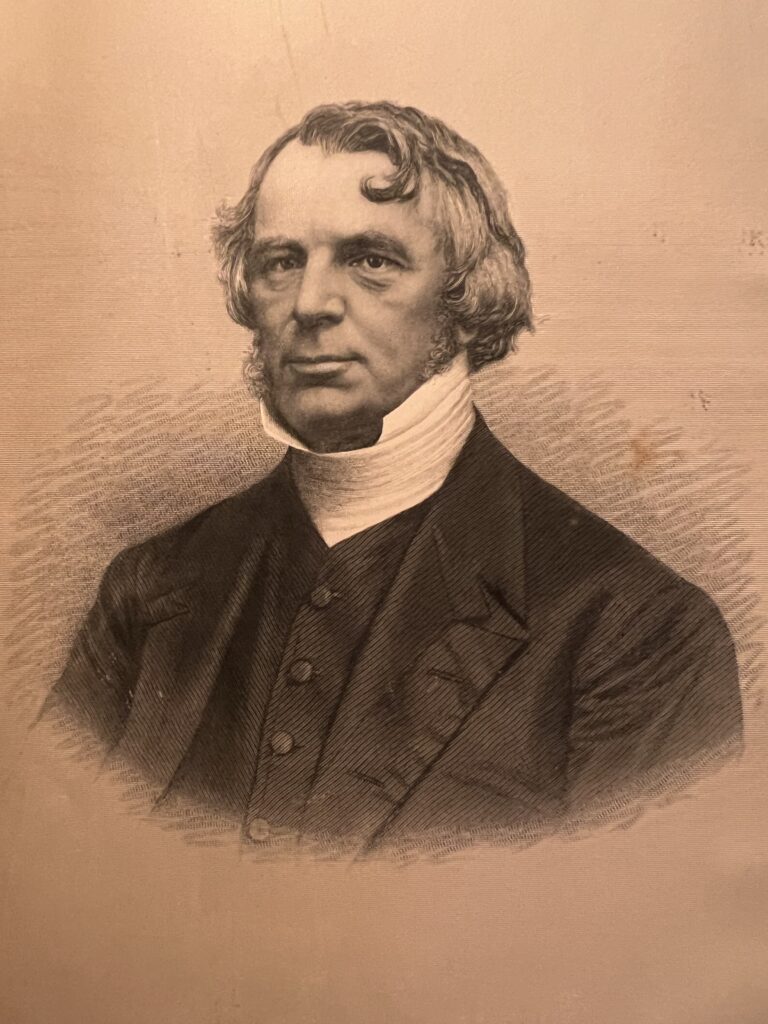
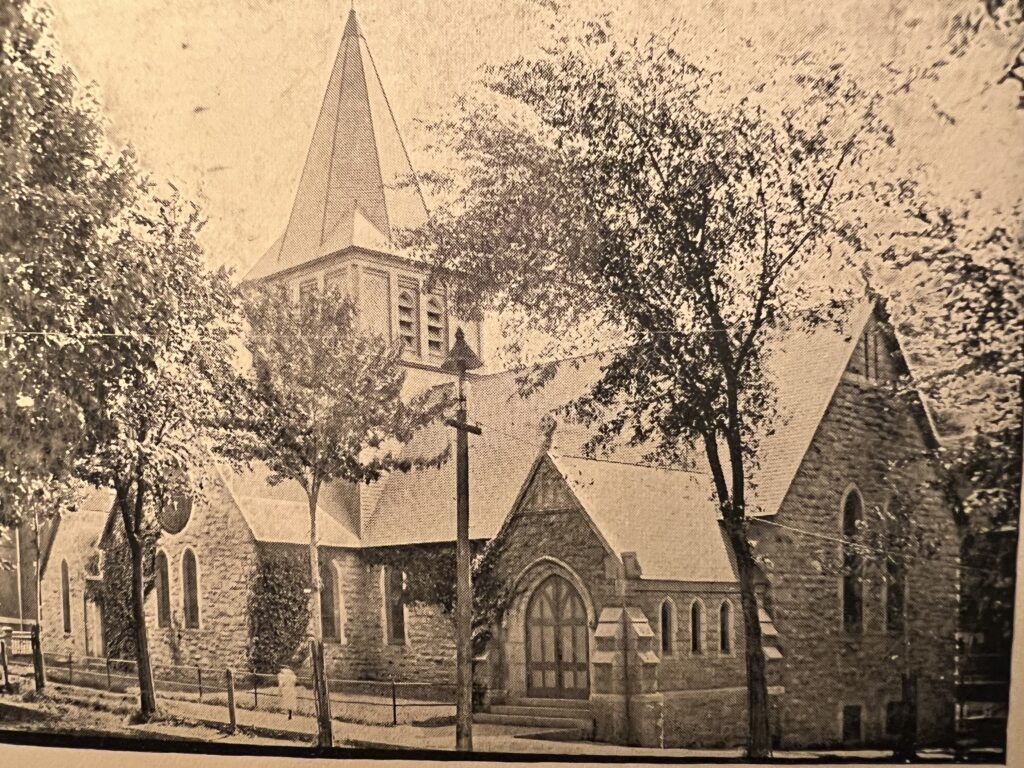
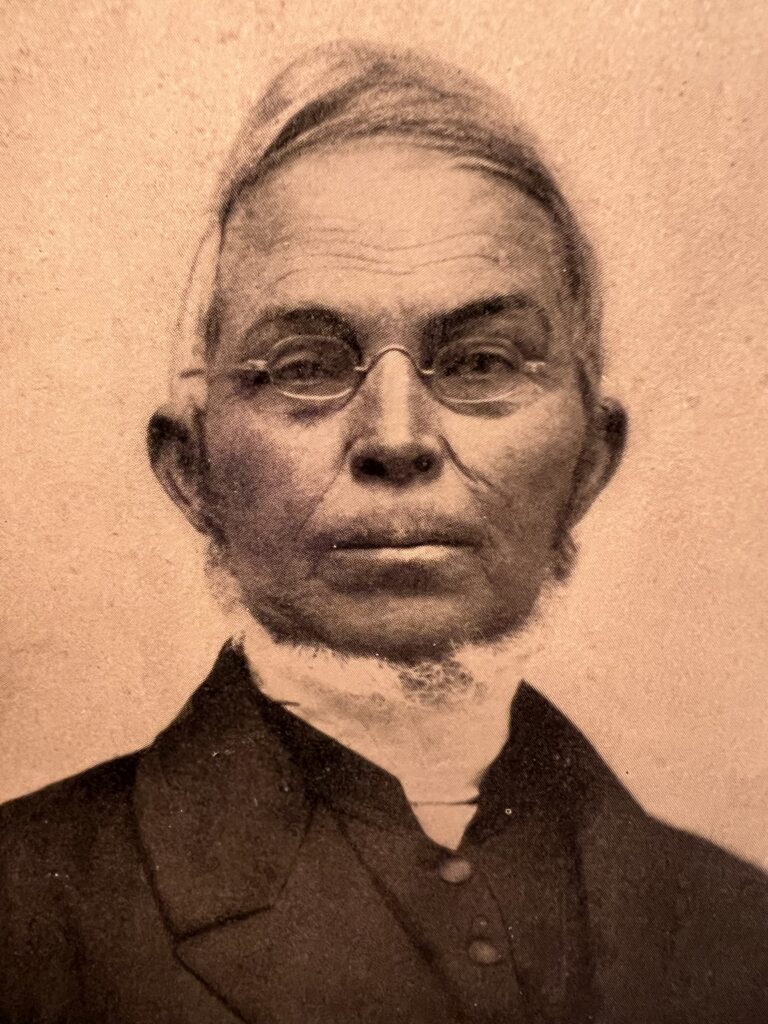
The Right Reverend George Burgess – First Bishop of Maine – 1847 (left)
Trinity Church circa 1887
The Reverend George Giddinge – First Priest in Charge – 1854 (right)
The Trinity Church Parish was organized in 1854, and built its first dedicate sanctuary at Ash and Park Streets in 1859. After outgrowing that space, the parish built this church, on land donated by the Franklin Company. Construction took three years, and the building was consecrated in 1882.
The church continues to be an anchor in the neighborhood. In 2001, it organized the Trinity Jubilee Center, which is a daily soup kitchen and social service agency. The Jubilee Center, now an independent non-profit, is still located in the church building. The parish was also instrumental in the creation of Tree Street Youth and the reopening of the Center for Wisdom’s Women.
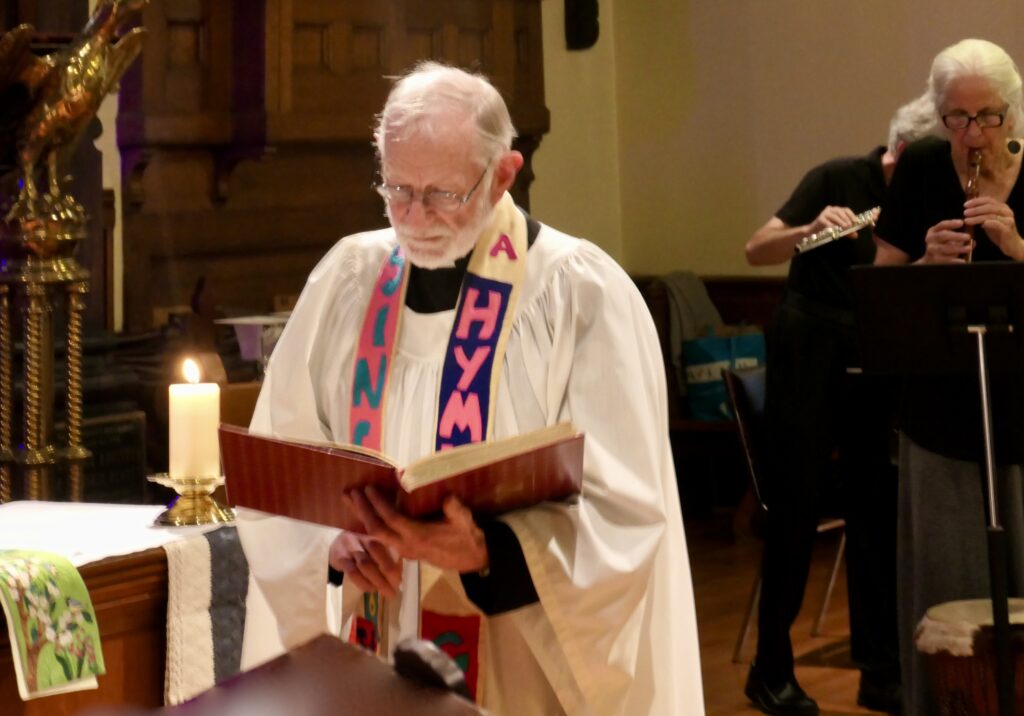
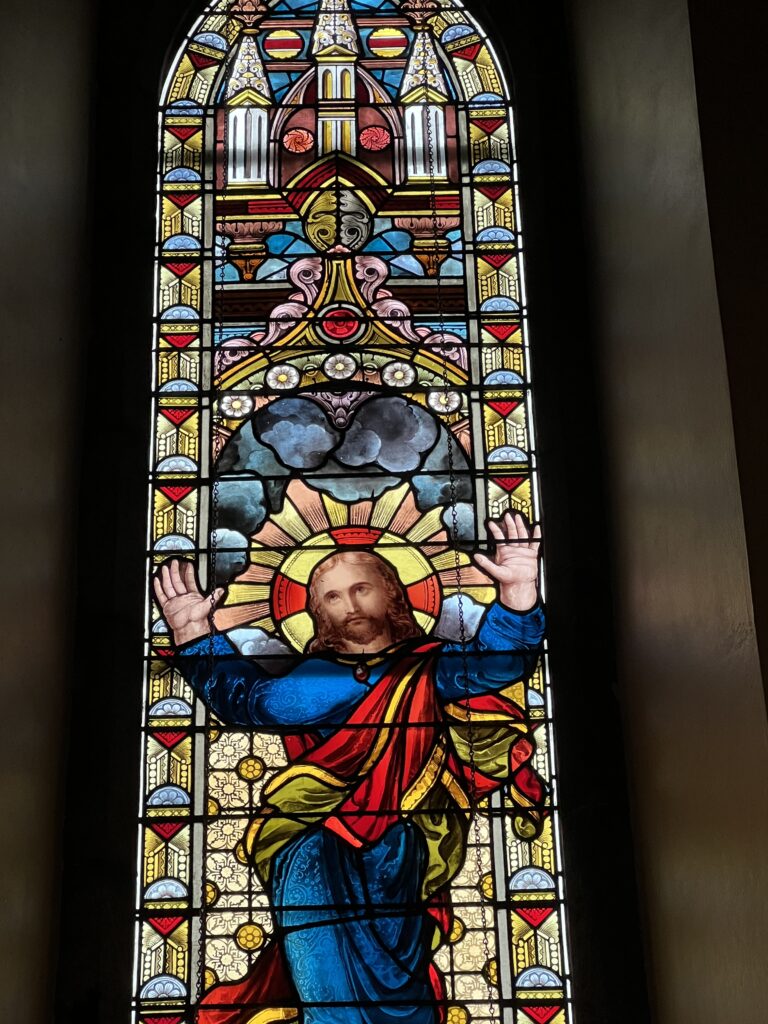
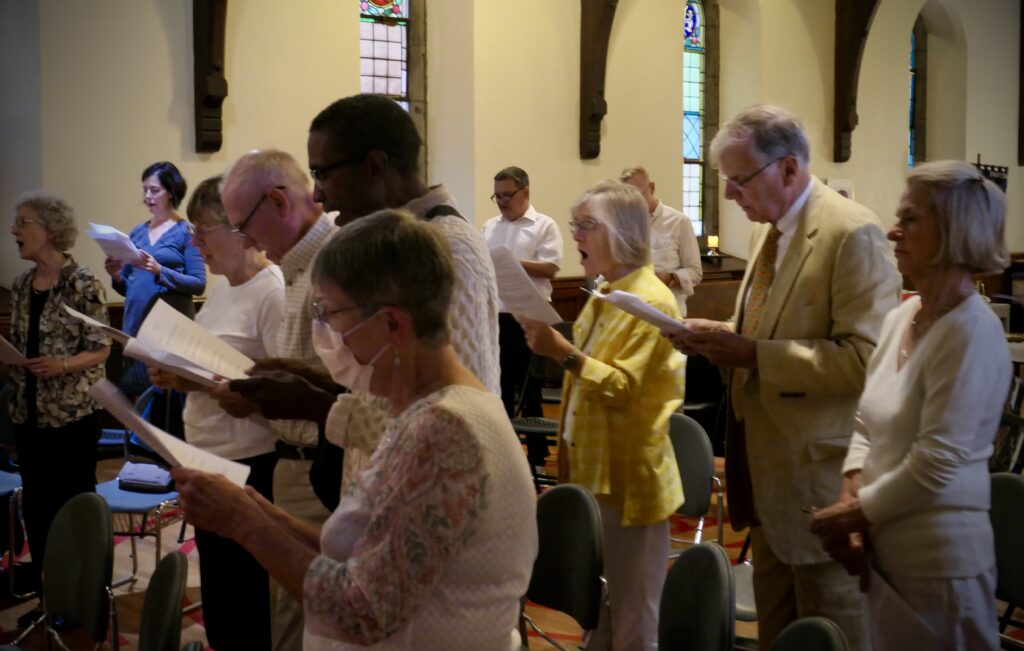
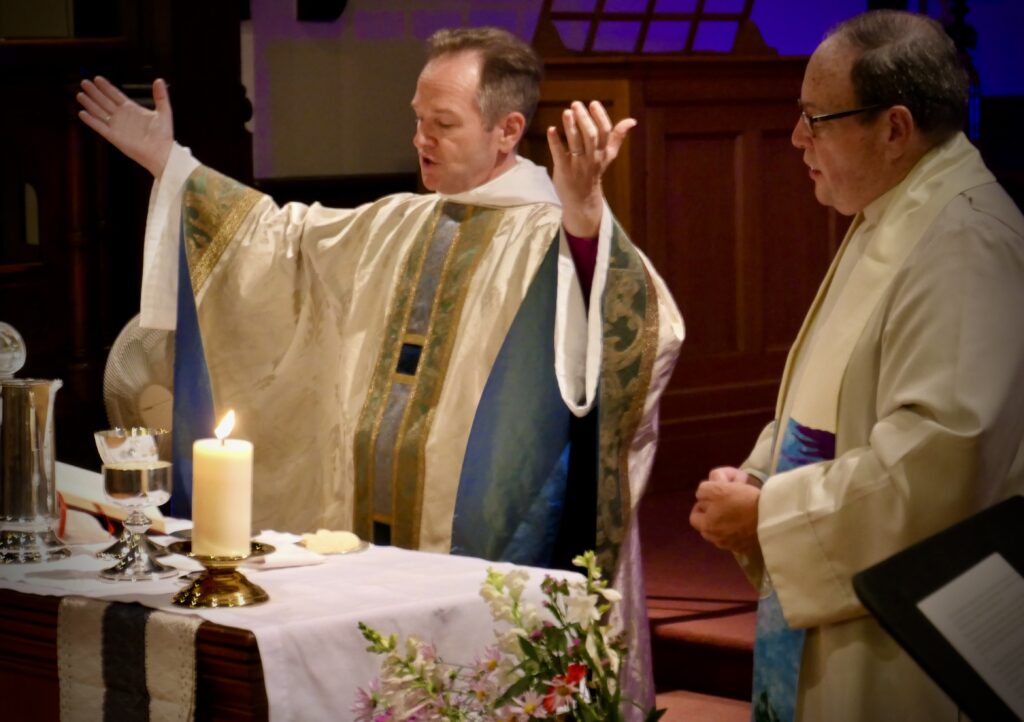
Trinity Today – Doors Open Wide
Trinity COMMONS houses a beautiful new labyrinth on the floor of the Nave, and a Memorial Peace Garden between the Narthex and North Trancept. The COMMONS invites community events in to the space on a regular basis – including musical, dramatic, educational, spiritual, and events focused on the well-being of the Tree Street neighborhood and the people of the Androscoggin River Valley.

Trinity Episcopal Church and COMMONS
2
247 Bates Street, Lewiston, Maine 04240
Mailing address: P.O. Box 1402, Lewiston, Maine 04243-1402
(207) 910-7737
email: information@trinitylewiston.org

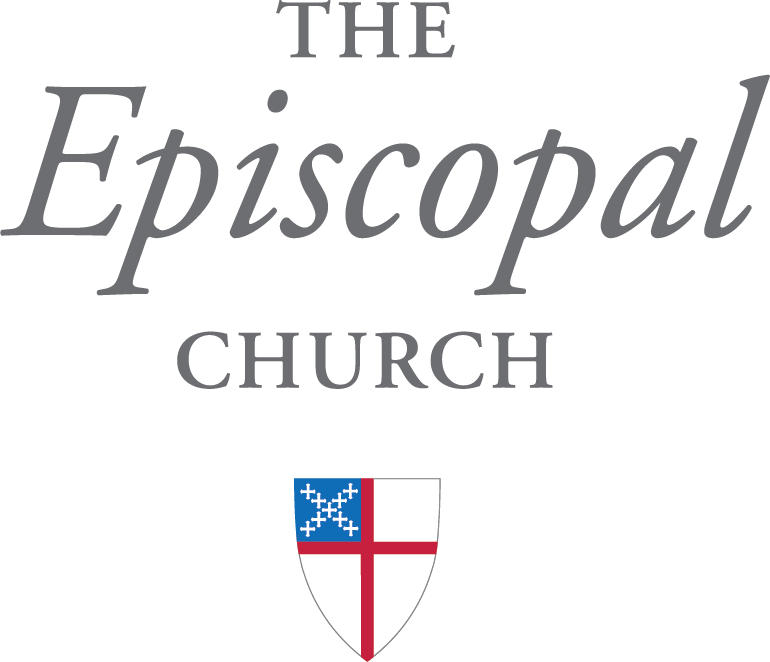
Whoever you are, and wherever you may be on the journey of the spirit, The Episcopal Church welcomes YOU!